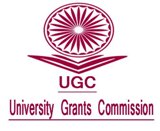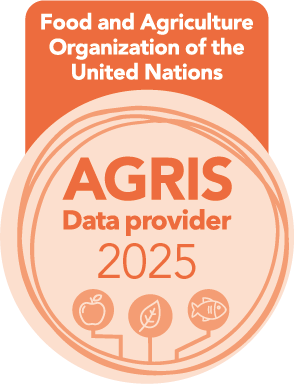Global Need for Revitalization of Agricultural Extension Training
DOI:
https://doi.org/10.26725/JEE.2019.3.31.6306-6319Keywords:
Agricultural extension, human resources, competencyAbstract
This article surveys the trends in agricultural extension programmes and services found across the world, including privatization, decentralization, and pluralism. The general movement from top-down extension services to demand-driven programmes is explored along with its impact on the skills needed by extension professionals. Process skills and competencies required of modern extension professionals—programme planning and development, programme implementation, written and spoken communication, educational and informational technology, facilitative leadership, diversity and multiculturalism, public relations, and applied research and evaluation—are explained and linked to relevant skill sets. In-service training of current extension agents and improvements to the facilities, faculty, and curricula used in the education of future agents are proposed as solutions to the challenges facing agricultural extension programmes and services. In-service training would raise knowledge, skills and attitudes of extension agents to meet changing contexts and needs. The changing nature of professional extension work requires that university training programmes respond with new courses and experiences for students. Practical education through fieldwork, internships, or practicums and techniques for adult learning, technology and communication skills, and leadership development are all possible solutions for closing the gap between the agricultural and extension education training programmes and the competencies required of professional extension agents.References
Association of Public and Land-Grant Universities (APLU). (2009) Human capacity development: The road to global competitiveness and leadership in food, agriculture, natural resources, and related sciences. Washington, DC: Office of Public Affairs.
Axinn, G.H. United Nations Food & Agriculture Organization. (1988). Guide on alternative extension approaches. Rome, Italy.
Camp, W., Broyles, T., & Skelton, N. (2002, July). National study of the supply and demand for teachers of agricultural education in 1999-2001. Retrieved from http://aaaeonline.org/files/supply_demand/teachersupply2002.pdf
Chambers, R. (1983) Rural development:Putting the last first. New York: John Wiley and sons.
Chipeta, S. (2006). Demand-driven agricultural advisory services. Lindau: Neuchâtel Group and Swiss Centre for Agricultural Extension and Rural Development.
Cooper, A.W., & Graham, D. L. (2001). Competencies needed to be successful county agents and county supervisors. Journal of Extension, 39(1), 1-7.
Economic Research Service (ERS). (2011). International Food Security Assessment, 2011-21/ GFA-22. Washington, DC: USDA. Feed the Future. (2011, August). Feed the Future Newsletter, (1), 3.
Ghere, G., King, J., Stevahn, L., & Minnema, J. (2006). A professional development unit for reflecting on program evaluator competencies. American Journal of Evaluation, 2, 108-123.
Hill, C., Corbett, C., & Rose, A. (2010). Why so few? Women in science, technology, and mathematics. Washington, DC: American Association of University Women.
Levine, J., Artabasy, J., Andrews, M., Majewski, K., Vandenberg, L., Haas, B., & Thelen, K. (2002, June, 14). Core competencies and MSU extension: Task group recommendations. Retrieved from http://www.msue.msu.edu/portal/default.cfm?pageset_id=298464&page_id=300561&msue_portal_id=25643.
Maddy, D.J., Niemann, K., Lindquist, J., & Bateman, K. (2002). Core competencies for the Cooperative Extension System. Retrieved from http://extn.msu.montana.edu/Jobs/pdf/Core_Competencies.pdf
McLean, D.D., Bannon, J.J., & Howard, G. (1999). Leisure resources: Its comprehensive planning. New Jersey: Prentice Hall, Inc.
Milburn, L.S., Mulley, S.J., & Cline, C. (2010). The end of the beginning and the beginning of the end: The decline of public agricultural extension in Ontario. Journal of Extension [On‐line], 48(6) Article 6FEA7. Retrieved from: http://www.joe.org/joe/2010 December/a7.php
National Research Council of the National Academies. (2009). Transforming agricultural education for a changing world. Washington, DC: The National Academies Press.
Osman-Gani, A.M., & Liang-Tang, W. (1998). Human resource development: The key to sustainable growth and competitiveness of Singapore. Human Resource Development International, 1(4).
Scheer, S.D., Ferrari, T.M., Earnest, G.W., & Connors, J.J. (2006). Preparing extension professionals: The Ohio State University’s model of extension education. Journal of Extension. 44(4).
Suvedi, M., & Kaplowitz, M. (2016). What every extension worker should know: Core competency handbook. Urbana Champaign, IL: Modernizing Extension and Advisory Services project. http://csus.msu.edu/meas
Swanson, B. (2008). Global review of good agricultural extension and advisory service practices. Rome, Italy: Research and Extension Division, Food and Agriculture Organization.
Swanson, B., & Rajalahti, R. (2010). Strengthening agricultural extension and advisory systems: procedures for assessing, transforming, and evaluating extension systems. Washington D.C: The World Bank, Agriculture and Rural Development (Paper 45).
Downloads
Published
How to Cite
Issue
Section
License
Authors who publish with JEE agree to the following terms:
- Authors retain copyright and grant JEE right of first publication with the work simultaneously licensed under a Creative Commons Attribution License that allows others to share the work with an acknowledgement of the work's authorship and initial publication in this journal.
- Authors are able to enter into separate, additional contractual arrangements for the non-exclusive distribution of the journal's published version of the work (e.g., post it to an institutional repository or publish it in a book), with an acknowledgement of its initial publication in this journal.
- Authors are permitted and encouraged to post their work online (e.g., in institutional repositories or on their website) prior to and during the submission process, as it can lead to productive exchanges, as well as earlier and greater citation of published work (See The Effect of Open Access).
Extension Education Society
https://creativecommons.org/licenses/by-nc-sa/4.0/
This work is licensed under a Creative Commons Attribution-NonCommercial-ShareAlike 4.0 International License.













.png)

